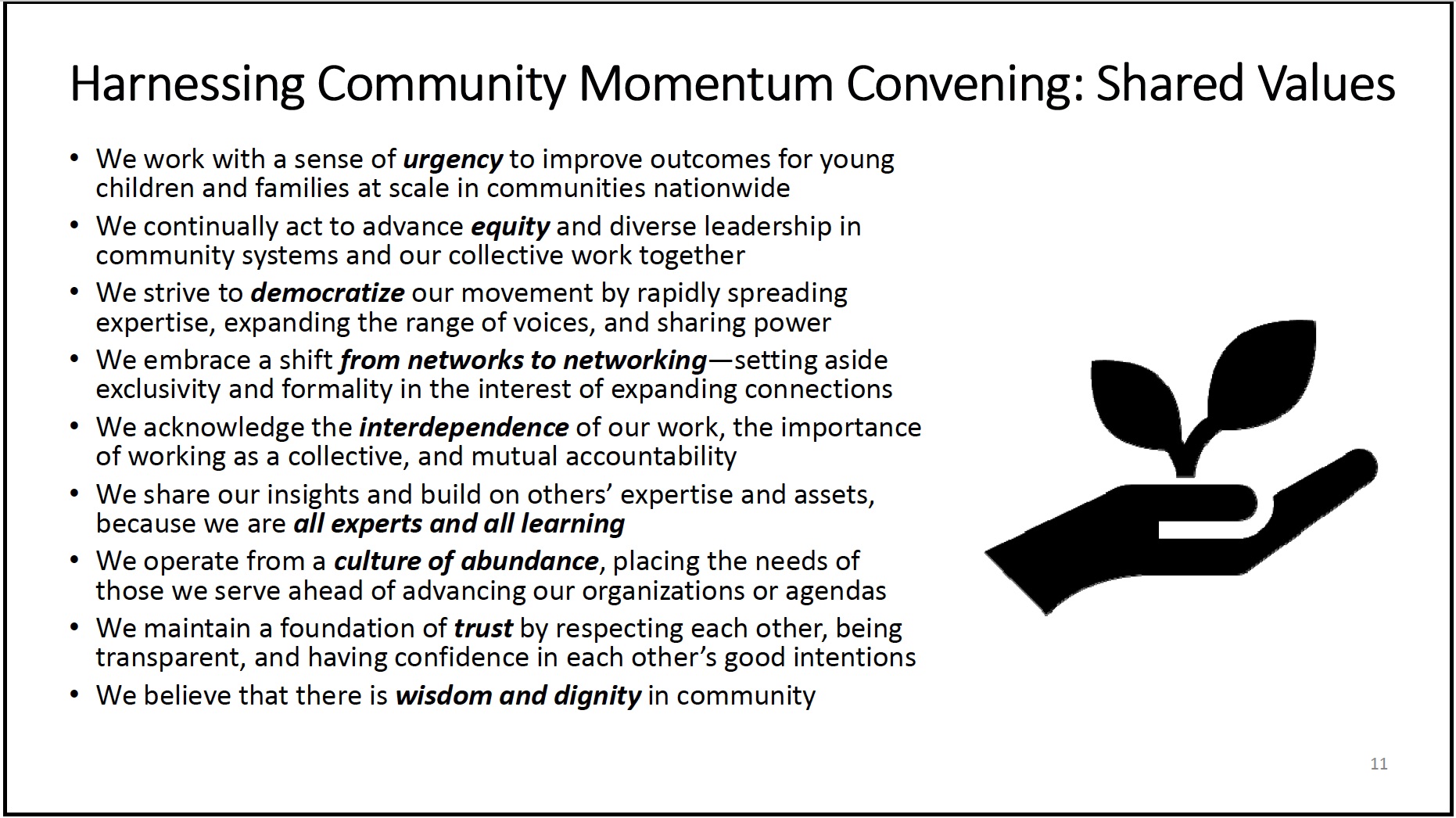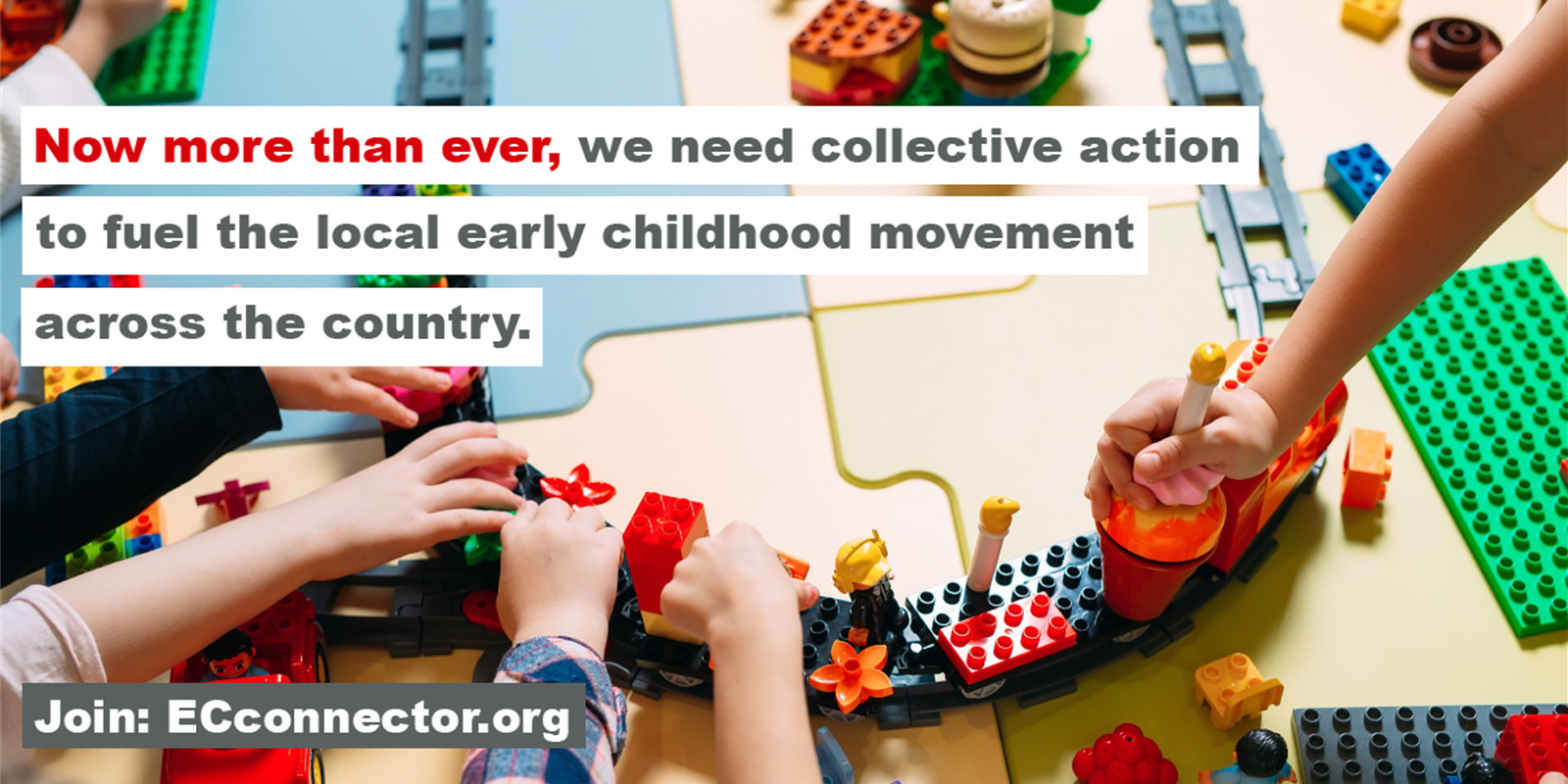There are more than 19,000 cities and towns and more than 13,000 school districts in the United States, and it’s safe to say that the vast majority of their leaders recognize that success in school and life depends on early learning experiences.
Yet building an integrated system of health, education and family engagement programs and services to support the youngest learners is a tall order. No matter how capable and well intentioned these leaders are, they are disconnected from opportunities to learn from each other. As a result, they have to, in effect, reinvent the wheel.
“We’re seeing an increase in the number of communities taking a systematic approach,” Rauner says. “It’s happening organically across the country, but there’s still not enough progress. There’s too much fragmentation in our field.”
Exchange, Collaborate, Build: How Peer Learning Drives Community Success
To jump-start systems-based solutions, a group of 33 national network and community leaders gathered last year at Wingspread—a Frank Lloyd Wright-designed house-turned-conference-center in Racine, Wis.—and launched Harnessing Community Momentum.

“It was like a barn raising,” says Joan Lombardi, who served, from 2009 to 2011, as the first Deputy Assistant Secretary for Early Childhood Development in the U.S. Department of Health and Human Services. “We came together for the common good.”
Harnessing Community Momentum’s first manifestation is the Early Childhood Connector. The online community was eagerly taken up as the pandemic spread and practitioners sought answers and reassurance. As early childhood development programs consider options for reopening in the fall, conversations are shifting to solutions for protecting the health of children and the workforce that serves them. More broadly, conversations are addressing how to “build back better” and realize an early childhood system that is equitable and sustainable.
Studies have shown that teachers improve their classroom performance when they learn from peers. As Harnessing Community Momentum shows, the same goes for early childhood leaders charged with improving the social factors that optimize early childhood development.
Colleen Murphy of the Ounce says that new features and functionality are in the works for the ECConnector. “Navigators from different organizations will be available to facilitate relationships and guide them to experts and similarly situated peers,” she adds. “They will check in later to find out how everything went.” That way, the next community facing a similar challenge will know what did and didn’t work.
For Michelle Larva, Project Manager, of the Early Learning Alliance in Tarrant County, Tex., ECConnector represents an opportunity for meaningful collaboration without expensive (and, these days, impossible) travel. “We are in the midst of developing a strategy for sustainable funding for early childhood systems in our community,” she says, “and I value the experience of colleagues across the country who are addressing similar issues.”
A trip through the ECConnector, which has quickly grown to over 1,200 members, reveals leaders exchanging ideas and encouragement. For example, a disparate group has been weighing in on strategies for coordinating COVID responses between public health and child care systems.
- In Vermont, regional public health nurses operate a call line for child care providers to answer questions.
- New Mexico’s Maternal and Child Health Director collaborated with the state’s new Early Childhood Department to develop guidance for child care programs and answer questions from child care providers and home visitors.
- The Iowa Child Care Resource & Referral Network has been working closely with Healthy Child Care Iowa nurse consultants to provide timely information to child care providers.
The Wingspread conversation was intense and candid. Some participants posited that an abundance of valuable knowledge is in the heads of experienced practitioners rather than at the fingertips of those who could use it right now. How do you capture their experiential insights? Others saw a problem that might seem irreconcilable with the first—too much information. The truth is, a Google search of “teaching children to count” yields more than 5 million results.
The Wingspread attendees called on a way to curate the available information and amplify the most relevant expertise. Still others expressed a need for a way that communities could informally connect and share their experiences.
“We need to get behind local efforts,” Lombardi says. “We need to champion them and communicate them to local, state and federal policy makers.”

As a pediatrician and social epidemiologist at Boston Medical Center and Director of the Vital Village Network, Dr. Renee Boynton-Jarrett viewed her participation at the Wingspread conference as a step toward becoming more connected to a field she recognized as vital but hadn’t been able to plug into. “The way the health care sector is set up, we don’t always make the best partners,” she says. She sees a need for a “multi-prong strategy” connecting experts with local community leaders with policy makers.
After much discussion, the Wingspread conference arrived at three goals for Harnessing Community Momentum:
- Fostering new ways of working collaboratively and collectively where a range of organizations working together can co-create and co-manage progress toward common priorities that no one organization can accomplish alone.
- Advancing knowledge sharing and dynamic idea generation across communities and networks to accelerate action in communities and at the local, state and national levels.
- Building the aggregate evidence to tell a powerful story of progress and impact of the local community movement, ultimately making the case for supportive public policy and expanded support.
So far, over 40 community and organizational leaders have participated in an iterative design process with experts in human-centered design and other fields. Lombardi celebrates the progress they’ve made as a movement without a leader. The leadership is the partnership.
Ounce of Prevention Fund’s Rauner notes that, due to the Coronavirus pandemic and other factors, the early childhood system is changing rapidly. “Important decisions are being made,” she says, “This is a critical moment for building back and expanding the reach of an early childhood system that is better and more equitable.”
In other words, in Larva’s stark summary of the present moment: How do we as a society nurture every single one of our children?

Mark Swartz
Mark Swartz writes about efforts to improve early care and education as well as developments in the U.S. care economy. He lives in Maryland.



